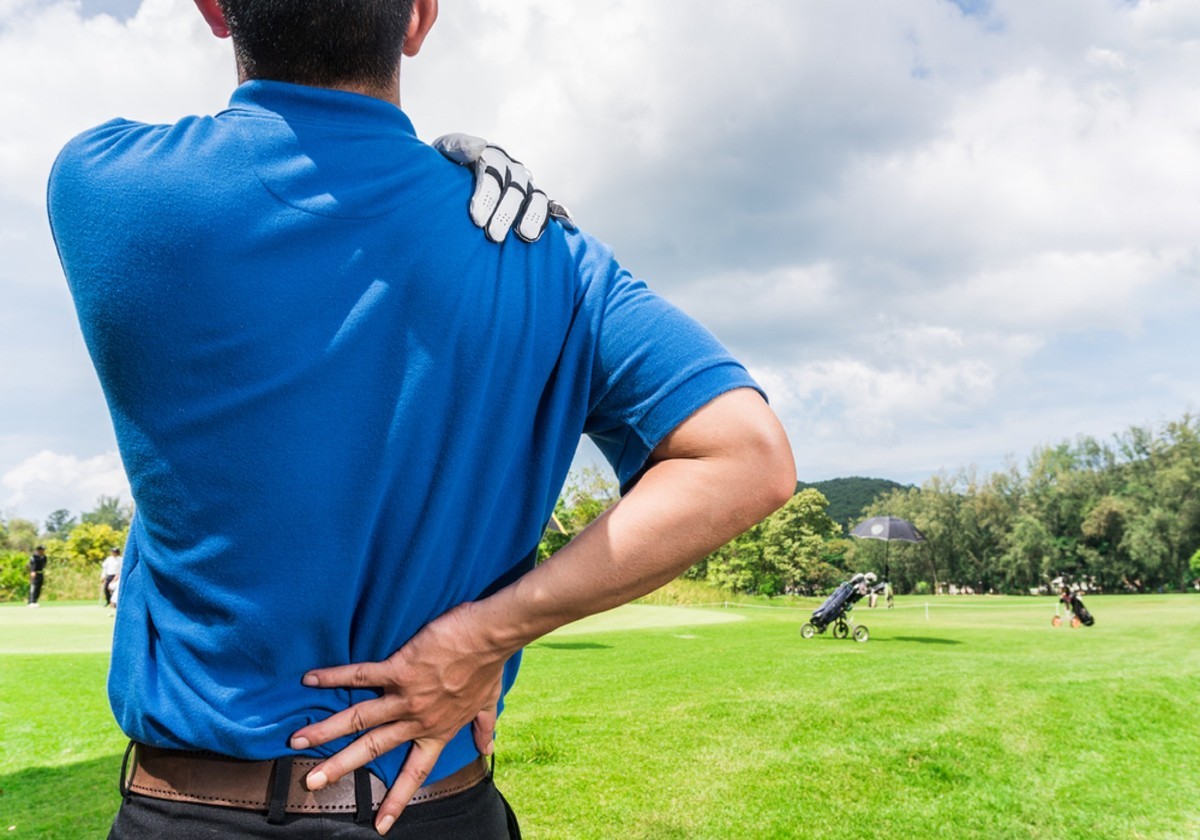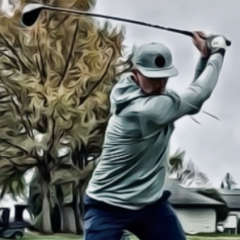
Common Golf Injuries and Prevention Strategies
Photo Credit: The Central Orthopedic Group
As with any sport, injuries are bound to appear in the game of golf. Injuries not only impact us at home and at work but also hinder the progress we are able to make with our game. If you’re injured, you’re losing valuable time to practice, play and improve. The majority of injuries golfers will face in a lifetime are the result of overuse or the frequent, repetitive motion and posture used for the golf swing. In this article, we will discuss some of the most common golf injuries and strategies we can take to prevent them.
Why Injuries Occur
How to prevent golf-related injuries begins with understanding why and how they occur. Injuries in sport occur due to an amount of pressure or force that is applied on the body that exceeds its tolerance threshold. A good example of this is an ACL tear in a basketball or football player. A sudden change of direction or awkward landing imparts force the ligament cannot withstand, causing it to tear.
In the golf swing, strong, repetitive rotational forces are being placed on the body each time we swing. Impact with the ground applies additional force, and stress, that our body needs to be able to tolerate and withstand over many repetitions. Our swing mechanics will also play a role in potential risk for injury. Physical fitness has become a priority in today’s professional golf landscape and is a key to injury prevention.

Photo Credit: Rochester Regional Health
Common Golf Injuries
Outlined below are some of the most common injuries that will occur over a golfer’s lifespan. Consider yourself lucky if you’re able to avoid all of these completely. The common theme you will see with these is they are predominantly overuse injuries.
Back Pain
-
The golf posture lends itself to a predisposition for lower back pain. You spend hours on the course for an 18-hole round repeatedly addressing the ball to take a swing. As “back pain” is quite a general term, we can take a look at three predominant categories of golf-related back injuries.
- Lumbar strains. Essentially another way to describe back pain, this muscle pain is caused from excessive strain. These will typically be diagnosed as soft tissue injuries.
- Disc herniations. These occur when the padding between your vertebrae move out of place.
- Spondylosis or osteoarthritis of the spine. This occurs when the cartilage in a golfer’s spine breaks down over time and is typically found in older individuals.
Rotator Cuff Injuries
The rotator cuff, which is made up of four individual muscles, provides stabilization and support to the shoulder joint. Golfers will often experience a muscle strain or complete tear of one or more of the muscles of the rotator cuff when this type of injury occurs. Golfers may also experience rotator cuff tendinitis, swelling of the cuff tendons.

Photo Credit: Back in Balance Wellness Center
Golfer’s Elbow
Golfer’s elbow causes pain where the tendons of your forearm attach to the bony bump on the inside of your elbow. This injury may cause inflammation and radiating pain that spreads throughout your forearm muscles and into your wrist. This is a very similar injury to tennis elbow and typically occurs due to excess or repetitive stress through forceful wrist and finger movements.
Wrist Injuries
- The most common wrist-related injury in golf is a sprain. Wrist sprains could be the cause of poor swing mechanics (think a fat shot that you don't get the clubhead through the turf smoothly) or the abrupt stoppage of the clubhead at impact due to striking a rock or tree root.
- Tendinitis, an inflammation of the tendons of the wrist, is another common overuse injury among golfers.
- Carpal tunnel syndrome occurs when the nerves in the wrist are compressed. The result of this overuse injury may lead to temporary numbness and tingling in the hands.
Hip Injuries
Some common injuries to the hip can include general pain, muscle strains and hip instability. Hip pain most commonly stems from general wear and tear of the joint as we age. However, hip pain can also be the result of overuse and poor mechanics, which impact the swing and power we are able to generate. Muscle strains, as discussed previously, occur when fibers of the muscle are damaged. Instability of the hip arises from too much motion within the joint of the hip itself.
Prevention Strategies

Photo Credit: Blog by golfballs.com
Now that we've discussed a multitude of potential injuries a golfer may face over the course of their playing life, let's take a look at some prevention strategies to help mitigate the risk of injury. Just like the golf swing, injury prevention is not a "one size fits all" strategy or solution. Finding a routine that works best for you is key not only to reducing your risk of sustaining an injury, but also your ability to perform it consistently. We will discuss a variety of things you can incorporate into your daily routine to help you reduce the likelihood of an injury and make you feel better and stronger physically.
The Warm-Up
This one may seem like common sense, but if you polled 10 golfers and asked them whether they perform a proper warm-up (raking balls on the range doesn't count), I'd venture to guess that three or four (tops!) would say yes. I want you to think back to your high school years. Whether you played football, basketball, baseball, soccer, volleyball or softball (you get the idea), odds are you performed a warm-up of some sort before the game. Warm-ups allow us to prime our body for movement. We are able to target a specific group of muscles through these activities that are relative to our sport. Some great dynamic stretches you can perform on the range before your round include:
- Standing Core Rotations
- Wide Stance Crossing Toe Touches
- Shoulder Dislocate Mobility Stretch
- Lateral Arm Swings
You could also look to add something like Therabody's Theragun, a portable percussive massage device, to your warm-up routine. Percussive massage can help to alleviate aches and pains while providing relief for sore muscles.
Strength Training

Photo Credit: TRX Training
I am a firm believer that a healthy body is a strong body and, regardless of your age, you can and will benefit from adding strength training to your weekly routine. Again, a “one size fits all” approach to strength training does not work, as each individual is unique and has different limitations to what they are able to perform physically.
If you currently do not have any strength training in your routine, start slowly by adding some bodyweight exercises like squats, lunges, push-ups and planks. Aim to perform two to three sets and 10 to 15 repetitions of each exercise. You can modify these exercises to fit your current fitness level as well. For example, if you cannot perform a standard push-up, modify it so your knees, not your feet, are on the floor. If that is still too challenging, brace yourself against a table or wall to perform them. For planks, set a time goal you'd like to hold the position for and work your way up to it.
If you're short on space or don't like going to the gym, check out the PRO4 System suspension Trainer from TRX. You could also add their Rip Trainer to incorporate some golf-specific training into your routine. TRX uses your body weight as resistance to perform a multitude of exercises and is a great training tool that accommodates all levels of fitness.
Mobility Exercises
Increasing your mobility, or the range of motion through which you can move, will also help to reduce the likelihood of sustaining an injury. If you're looking to increase your mobility and feel better physically in general, make sure you check out this article on some exercises you can add to your routine today.
Recovery Techniques
Equally as important as the warm-up, recovery techniques like static stretching allow us to lengthen our muscles after repetitively shortening them through activity. Ice and heat therapy can also relieve sore muscles and help speed up the recovery process. The RecoveryTherm Cube from Therabody provides hot and cold therapy in one compact package. Use heat to relieve sore muscles and stiffness and help with muscle spasms. Heat therapy has also been shown to improve blood circulation, getting more red blood cells to the target site to aid in increasing recovery. Cold therapy can help to relieve pain, inflammation and swelling in joint, muscle and soft tissue injuries.
Conclusion

Photo Credit: OrthoVirginia
With any and all injuries, I cannot overstate the importance of scheduling an appointment with your primary care provider if you feel you may have sustained an injury beyond general stiffness or soreness. I get it, this means more time away from the course, which is not what any of us wants. However, the timely diagnosis of an injury may be treated through physical therapy without surgery. By ignoring the nagging or lingering pain you are experiencing, you run the risk of exposing yourself to significant injury and even more time away from the game.
We hope now you have a better understanding of the most common golf injuries and are now better equipped with prevention strategies to keep you playing your best golf all of the time.
- TJ Hall, Michael.Sandoval33, StrokerAce and 1 other
-
 2
2
-
 2
2


Recommended Comments
Join the conversation
You can post now and register later. If you have an account, sign in now to post with your account.